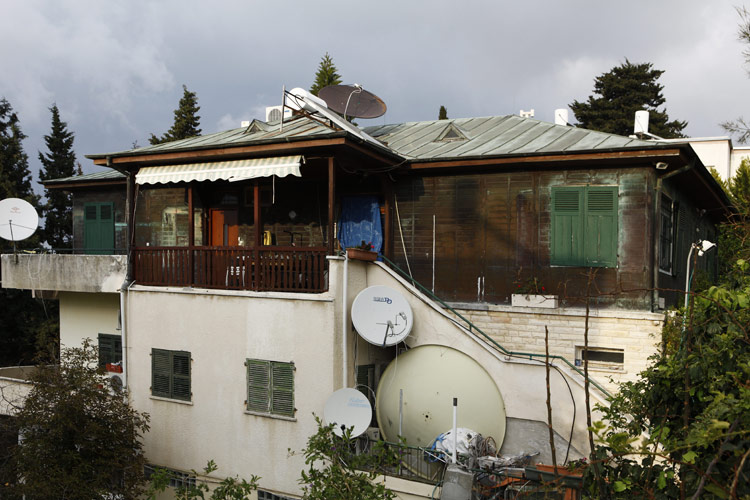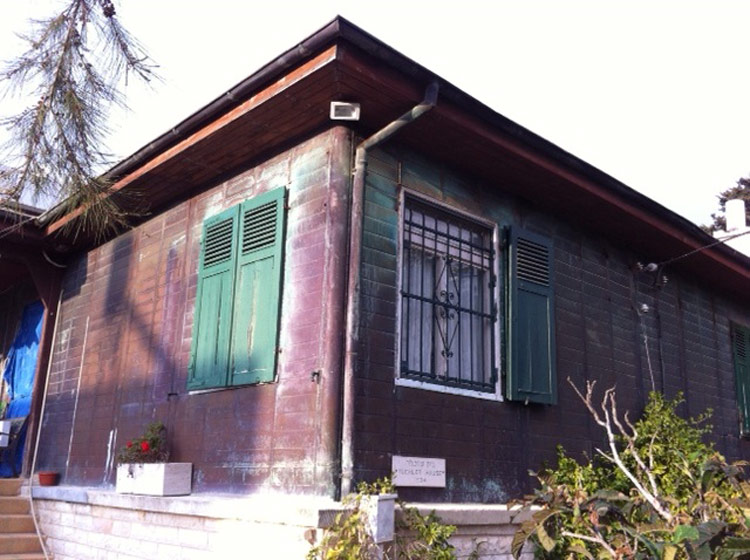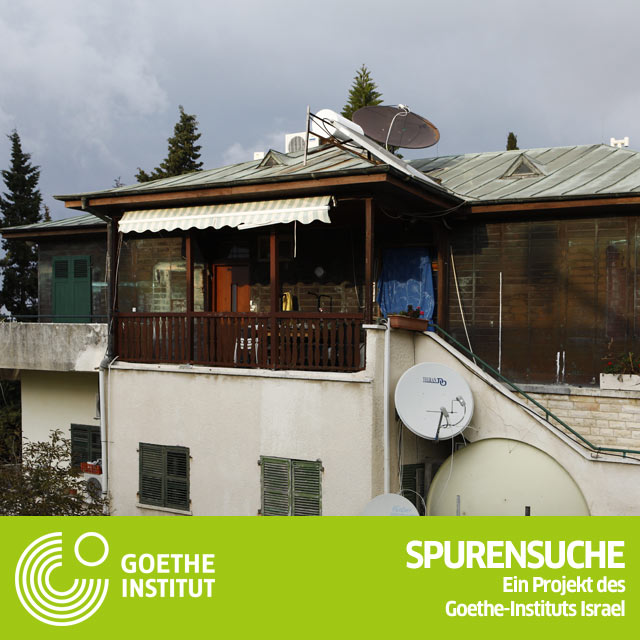Israel:Copper houses in Haifa: Unterschied zwischen den Versionen
K (Newline insert before newBox via script) |
|||
| (Eine dazwischenliegende Version von einem anderen Benutzer wird nicht angezeigt) | |||
| Zeile 3: | Zeile 3: | ||
[[Datei:ISRAEL_2_kupferhaeuser_2.jpg|750px|thumb|left|© Goethe-Institut]] | [[Datei:ISRAEL_2_kupferhaeuser_2.jpg|750px|thumb|left|© Goethe-Institut]] | ||
| − | These buildings are prefabs made from copper plate, which should ideally be ready to move into within a day. The prefab construction method was developed in 1929 by architect Robert Krafft and engineer Friedrich Förster. Two years later at the International Colonial Exhibition in Paris their project won a Grand Prix. Then the famous architect Walter Gropius was awarded the contract to improve the initial house models. Gropius designed them to be more “modern” by for instance putting flat roofs on them. In Germany the different models were called Lebensquell (Source of Life), Frühlingstraum (Spring Reverie), Kupfermärchen (Fairytale in Copper) or Sonnenschein (Sunshine).{{#newBox:listbox}} | + | These buildings are prefabs made from copper plate, which should ideally be ready to move into within a day. The prefab construction method was developed in 1929 by architect Robert Krafft and engineer Friedrich Förster. Two years later at the International Colonial Exhibition in Paris their project won a Grand Prix. Then the famous architect Walter Gropius was awarded the contract to improve the initial house models. Gropius designed them to be more “modern” by for instance putting flat roofs on them. In Germany the different models were called Lebensquell (Source of Life), Frühlingstraum (Spring Reverie), Kupfermärchen (Fairytale in Copper) or Sonnenschein (Sunshine). |
| + | {{#newBox:}} | ||
| + | {{#Audio: http://lbs.goethe.de/mediawiki/images/b/bd/ISRAEL_2_kupferhaeuser_deutsch.mp3 | Report about the copper houses (German)|[[Datei:ISRAEL_MP3_002.jpg]]||Copper houses}} | ||
| + | {{#Audio: http://lbs.goethe.de/mediawiki/images/5/5b/ISRAEL_2_kupferhaeuser_hebrew.mp3 | Report about the copper houses (Hebrew)|[[Datei:ISRAEL_MP3_002.jpg]]||Copper houses}}{{#newBox:listbox}} | ||
==More== | ==More== | ||
* [[Israel:The Jaffa model | The Jaffa model]]{{#newBox:listbox}} | * [[Israel:The Jaffa model | The Jaffa model]]{{#newBox:listbox}} | ||
Aktuelle Version vom 4. September 2020, 16:29 Uhr
“Take a copper house with you to Palestine. Despite the intense heat your rooms will remain cool” – this was once the slogan used by the “Hirsch Kupfer und Messingwerke AG” to advertise in the Jüdische Rundschau. When the German-Jewish entrepreneur Siegmund Hirsch started production of copper houses back in spring 1931, he saw a double function in this: his company was not working to full capacity and there was a need for housing in the Weimar republic; on the other hand he wanted to make a contribution to the development of the future state of Israel.
These buildings are prefabs made from copper plate, which should ideally be ready to move into within a day. The prefab construction method was developed in 1929 by architect Robert Krafft and engineer Friedrich Förster. Two years later at the International Colonial Exhibition in Paris their project won a Grand Prix. Then the famous architect Walter Gropius was awarded the contract to improve the initial house models. Gropius designed them to be more “modern” by for instance putting flat roofs on them. In Germany the different models were called Lebensquell (Source of Life), Frühlingstraum (Spring Reverie), Kupfermärchen (Fairytale in Copper) or Sonnenschein (Sunshine).
German Traces in Israel
A project by the Goethe-Institut Israel
Author: Gisela Dachs
Photos: Noa Ben-Shalom



